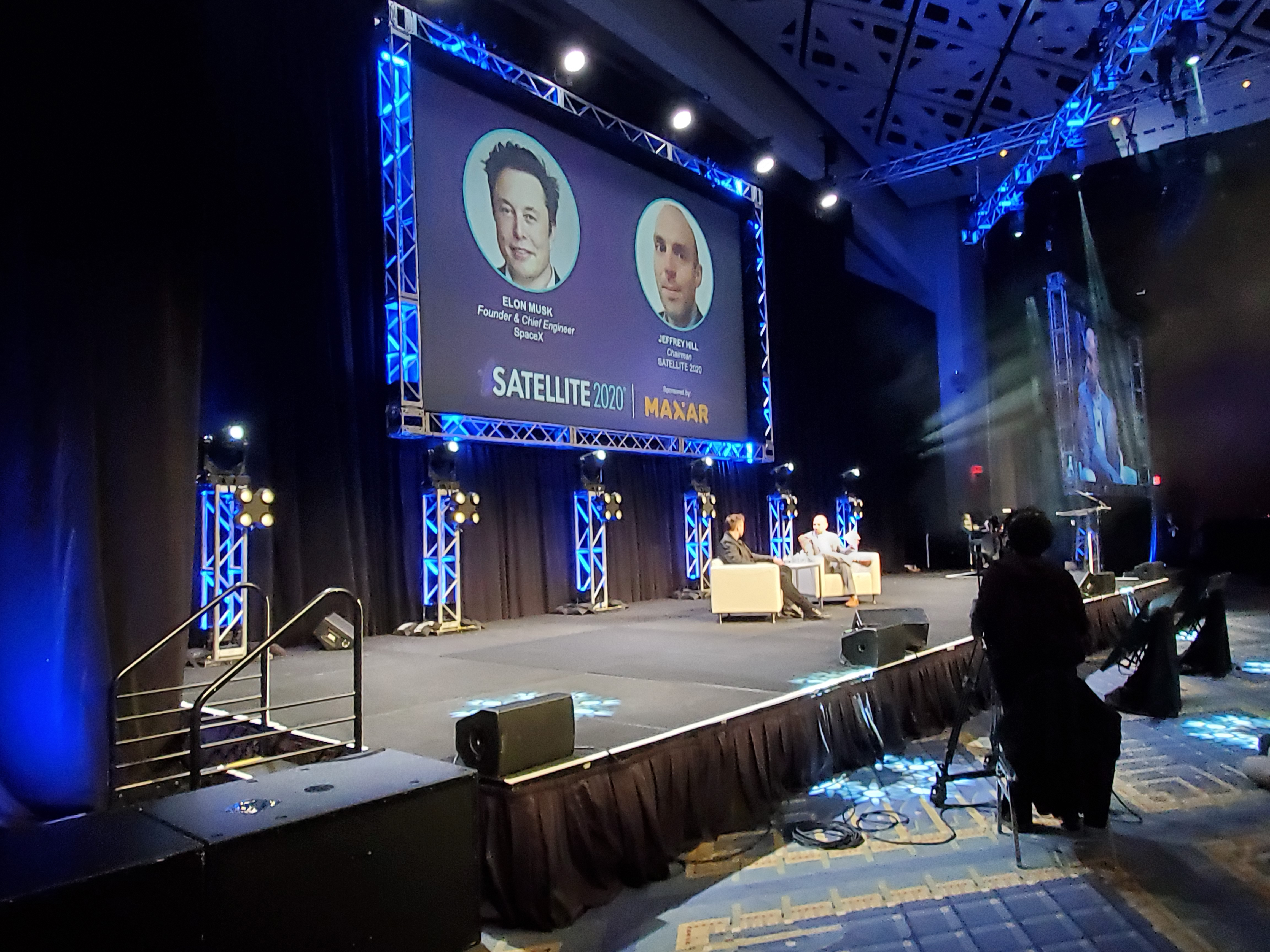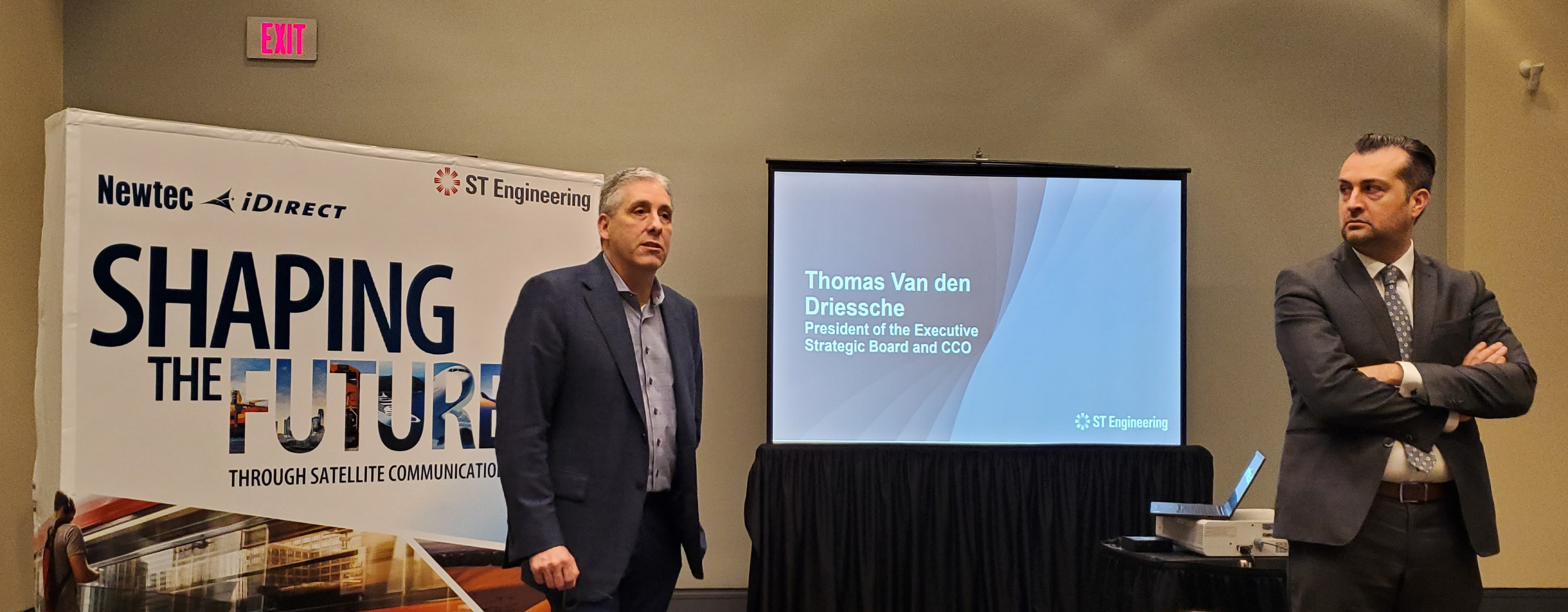The industry's premier show, Satellite 2020 held from March 9-11 in Washington D.C., was almost a surreal experience. I don’t know the precise numbers, but from walking around the show floor, I would guess that attendance was down by 30-50%. There were large gaps where booths should have been.
Tuesday, the opening day for exhibits, had the same feeling and volume of foot traffic as a usual last day of a show. Although this year, there really wasn’t a last day. The show and conference sessions were due to close on Thursday, but early on Wednesday afternoon, the Washington D.C. Health Department issued an order banning events of more than 1,000 people, so the organisers cancelled the last day of the show and advised attendees that they had to be out of the convention center by 17.30 that day.
Attendance at the sessions, which started on Monday, varied tremendously. Some were nearly full, others devoid of both audience and speakers. Most were missing one or more speakers. For attendees, it was also a mixed experience. Some reported so many cancelled meetings, that the whole experience was a waste of time. Others felt that the meetings that they did have were much more productive, due to all the extra time available.
  |
| Satellite 2020 Keynote address was given by Spacex CEO Elon Musk. |
Spacex CEO Elon Musk was the keynote speaker on the first day, and the question and answer session hosted by Jeffrey Hill just added to the surreal feeling. The session started with Musk asserting, that as he’s said before, he wants to establish a base on Mars. Then he went on to explain that unless things were to change to speed up progress, it wasn’t going to happen in his lifetime. Most of the blame apparently lies with software: “There is an awful lot of software out there, and most of it was written by people who are dead.” He then went on to talk about his new philosophy, management by rhymes: “if the schedule is long, the design is wrong.” In response to a question from the audience, he also asserted that you don’t go to college to learn, “You can learn anything you want for free. You go to college to have fun, hang around with a bunch of people your age, and prove that you can do your homework.”
SpaceX has received a lot of negative comments from astronomers, complaining that the Starlink satellites are so numerous and bright (and only 2% of the full constellation has been launched) that they are blotting out distant stars. In response to this Musk, said that future satellites would be black and would have a small sunshade so that there would be no reflection. Explaining why he decided to get into the communications business, he stated that the revenue potential of launching satellite, tops out around US$3 Billion, whereas the revenue potential of the Starlink constellation is about 10x more. The target market, remains the 3-4% of hardest to reach customers.
Contrary to what SpaceX COO and President Gwynne Shotwell, was reported to say at an investor conference last month, Musk asserted that there was “zero” chance of spinning off Starlink via an Initial Public Offering (IPO). Musk noted that all previous low earth orbit (LEO) constellations have all gone bankrupt. He emphasized that his single goal was “to avoid going bankrupt.”
LEOs
As would be expected conversations about the LEOs, were a recurring theme throughout the sessions. Note was made that both Telesat and OneWeb were now behind schedule, and LeoSat of course, exited the market. Peter de Selding, Co-founder and Editor at Space Intel Report, during a panel on Satellite Financing, commented that he did not see this as a red flag. On the same panel, Mark Rigolle, CEO at KLEO Connect and former CEO of LeoSat, commented that “startups never perform on time.”
During the opening general session with the Global Satellite Operators, which this year had only three representatives: SES, Eutelsat and Hughes, the panel was asked how it felt about Amazon and SpaceX getting into the satellite business, as these new competitors could afford to make losses for many years. Steve Collar, CEO SES, was very positive about this: “We need continuous innovation and new services, and newcomers bring these in.” Pradman Kaul, President of Hughes agreed: “Competition is good. It forces us to move at a faster pace, so we welcome it.” The operators were also asked how they felt about SpaceX essentially getting into their business with the launch of Starlink. Both Steve and Pradman, said that they still felt good about their relationship with SpaceX. Michel Azibert, Deputy CEO, Eutelsat, was more cautious: “We work with Blue Origin, SpaceX and Arianespace. If SpaceX becomes a completely integrated company that may change.” They all agreed, however, that the future of the industry lies in multiple orbits, although Michel, cautioned that he didn’t believe in LEO for consumer broadband. The audience was asked which orbits their companies were investing or planning to invest in; 57% responded “all of them.”
ST Engineering iDirect Provides a Glimpse of the Merged Company's Vision and Direction
ST Engineering iDirect took the opportunity of Satellite 2020 to have a briefing for the press, to talk about the vision for the combined company, (Newtec and iDirect). Kevin Steen, CEO opened by stating that right now, there is an unprecedented amount of money going into the satellite industry, and as a ground service provider ST Engineering intends to be at the center of this. He pointed out that satellite is a key segment for the parent company, and the intention is to integrate satellite into its other activities, namely Smart Connectivity, Mobility and Security. He also mentioned that this is an opportunity for the company to “move up the value chain.”
  |
| ST Engineering iDirect CEO Kevin Steen (on left) and President of the Executive Strategic Board and Chief Commercial Officer (CCO) Thomas Van den Driessche presented their merged company's vision and direction going forward. |
Thomas Van den Driessche, President of the Executive Strategic Board and Chief Commercial Officer (CCO) continued on to say that through the merger, the company now had access to capital at a lower rate than previously, so is now able to be a financial partner, and become the ground system integrator for LEOs and MEOs. The company will also move into an OPEX model, offering Platform as a Service (PaaS). Since the new combined (Newtec and iDirect) platform will be software defined, it will be flexible enough to serve all the new LEOs, so the company will not be dependent on the success of one operator over another.
Bart Van Poucke, VP Product Management explained how the combined company is in the process of rationalizing the product portfolio progressing towards a converged technology platform. This is now being tested with a few customers to make sure that nothing has been missed. The modems are software defined but will not be interchangeable between sectors, for example an aeronautical modem will be different to a maritime one. For the last three or four years Newtec has been working on waveform convergence, and this will be integrated into the new platform. Mx-DMA for its spectral efficiency combined with scalability (up to 5,000 terminals on a single demodulator) and agility (to cover bursty applications). The combined technology is known as Mx-DMA MRC (Multi-resolution coding) and according to Van Poucke, is the optimal converged waveform for all applications and VSAT services, providing a common self-organizing forward and return path. This will first be launched on Dialog platforms, but will obviously be included on all Datapath platforms in the future. Van den Driessche added that this is “the most efficient, most advanced return technology that you can imagine……the efficiencies are incredible, the overhead is very low and it scales 10,000-100,000 sites, it’s the most advanced VSAT return technology ever built.”
The Looming COVID-19 Pandemic
The satellite industry, like the rest of the world is facing uncertain times. On March 9th, the first day of the conference, there were 108,000 confirmed cases of the novel coronavirus or what's officially called COVID-19 around the world, with 3,800 deaths. Despite these alarming numbers, it wasn’t considered severe enough to cancel the conference, although as already mentioned many companies decided to put the welfare of their staff first, and not attend. By March 11th, the penultimate day of the conference, the World Health Organization (WHO) declared a global pandemic. At the time of writing (March 19th), those figures have grown to 210,000 cases and 8,800 deaths, and the most of the world as we knew it, has shut-down. As we are all aware, in some countries, there is a shortage of test kits, so it is likely that the actual number of cases is far higher and sadly will continue to grow at the same exponential rate.
Th economic impact has been swift and drastic, and the fall out continues to escalate, as many people around the world are facing a major decrease in disposable income, either due to job losses or the stock market crashing. Although the impact on the industry will vary by sector, overall, the satellite industry may come through this, better than many sectors.
Usually in times of recession, video suffers less than many industries, as people stay home and watch TV, rather than going out. In this pandemic people around the world are being advised, or forced to stay home. In spite of the increase in streaming services, video still remains a significant revenue generator for the satellite industry. In the opening session, Michel Azibert pointed out that it still accounts for 60% of Eutelsat’s revenue. Provided that households still have enough money to pay subscription fees, and advertising supported free-to-air (FTA) services keep going, this side of the satellite business should suffer less than many sectors. It may in fact experience an uptake in direct to home (DTH) and content distribution services. This is likely, if terrestrial broadband is unable to cope with increased demand for streaming services, prompting customers to return to satellite and cable TV. Broadband to the home should also weather the storm, as people are being urged to work from home, and of course will also be watching more streaming video. The government sector should also do well, as in times of crisis there is usually more demand for services.
In recent years broadband to the maritime and aeronautical industries has been a rapidly growing niche, and one that is unlikely to fare well during the pandemic. Many cruise lines have suspended operations and travel both domestic and international is experiencing a huge decline, so this sector of the satellite business is likely to be hit hard. Depending on where it is located, satellite and equipment manufacturing may also suffer, as countries, states and regions issue “stay at home” orders, supply chains, of course, may also be severely disrupted.
As John Finney, Founder of Isotropic Systems, said in a session entitled “The Great Satellite Financing Debate”: “This is a test of leadership for the industry. There is no book on how to lead during a global pandemic, we’re writing it. The welfare of our staff is our highest priority.”
Let’s hope that we write it well, and we all survive and prevail in these challenging times.
-----------------------------------------
 Elisabeth Tweedie has over 20 years experience at the cutting edge of new commmunications entertainment technologies. She is the founder and President of Definitive Direction (www.definitivedirection.com), a consultancy that focuses on researching and evaluating the long-term potential for new ventures, initiating their development, and identifying and developing appropriate alliances. During her 10 years at Hughes Electronics, she worked on every acquisition and new business that the company considered during her time there. She can be reached at etweedie@definitivedirection.com
Elisabeth Tweedie has over 20 years experience at the cutting edge of new commmunications entertainment technologies. She is the founder and President of Definitive Direction (www.definitivedirection.com), a consultancy that focuses on researching and evaluating the long-term potential for new ventures, initiating their development, and identifying and developing appropriate alliances. During her 10 years at Hughes Electronics, she worked on every acquisition and new business that the company considered during her time there. She can be reached at etweedie@definitivedirection.com





